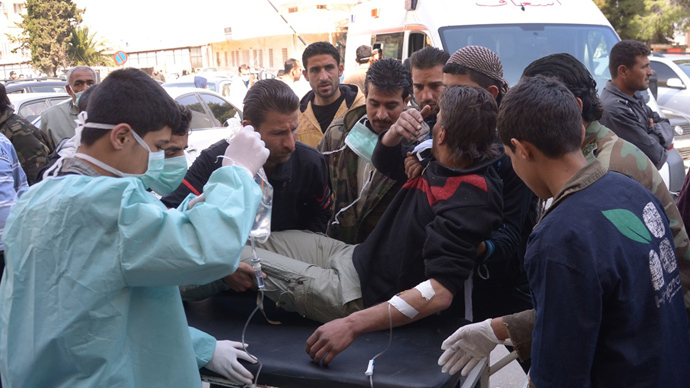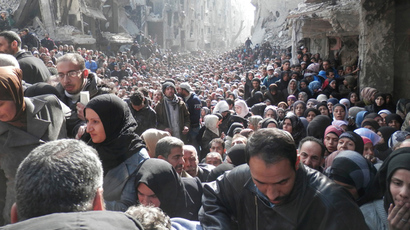Sarin used in two Syria chemical attacks point to military stockpiles - UN

Two incidents where chemical weapons were used in Syria last year appear to have come from Syrian army stockpiles, United Nations investigators said on Wednesday in a new report that goes beyond previous conclusions.
The team of experts led by Paulo Pinheiro concluded that sarin –
a deadly nerve agent – was used in total in three incidents: in
the Damascus suburb of Al-Ghouta on August 21, in Khan al-Assal
near Aleppo on March 19, and in Saraqeb near the northern town of
Idlib in April 2013, Reuters reported.
"The evidence available concerning the nature, quality and
quantity of the agents used on 21 August indicated that the
perpetrators likely had access to the chemical weapons stockpile
of the Syrian military, as well as the expertise and equipment
necessary to manipulate safely large amount of chemical
agents," the UN investigators said in the report.
They also concluded that the attack in Khan al-Assal in March
used the same chemical agents and bore exactly the same hallmarks
as the Al-Ghouta attack in August.
But Pinheiro’s report did not give any reliable casualty figures
from the attacks and was only able to determine “that at
least several hundred people were affected.”
Ake Sellstrom, who was in charge of the inspection team that was
on the ground in Syria, concluded in an earlier report in
December that while chemical weapons had most likely been used in
five out of seven alleged attacks, the team did not assign any
blame.
Both the Syrian government and the opposition have blamed each
other for the attacks, which they have also both denied.
The Al-Ghouta attack was the world’s deadliest in 25 years and
provoked threats of retaliatory military attacks by the US. Under
a diplomatic initiative suggested and largely brokered by the
Russians, Syrian President Bashar Assad agreed to help the
international community to destroy his chemical weapons arsenal.
On Tuesday, the Organisation for the Prohibition of Chemical
Weapons (OPCW) – the global chemical weapons watchdog – said that
Syria has so far managed to ship out about one-third of its
stockpile, including mustard gas, for destruction abroad or on
vessels in international waters.
The Pinheiro team has been investigating up to 20 incidents where
chemical weapons have allegedly been used. He said they were
building on Sellstrom’s findings while also trying to dig deeper.
Pinheiro told a news conference on Thursday that his team had
interviewed a wide group of people, including doctors, victims,
defectors, and journalists.
“We made other investigations [to Sellstrom] in terms of
interviews of experts, interviews with functionaries involved. We
conducted our own investigation including specialized expertise
and of course we have been in close contact with the members of
this Sellstrom mission,” he said.
Selltsrom’s December report visited only seven sites and cited
poor security conditions as the primary reason.













